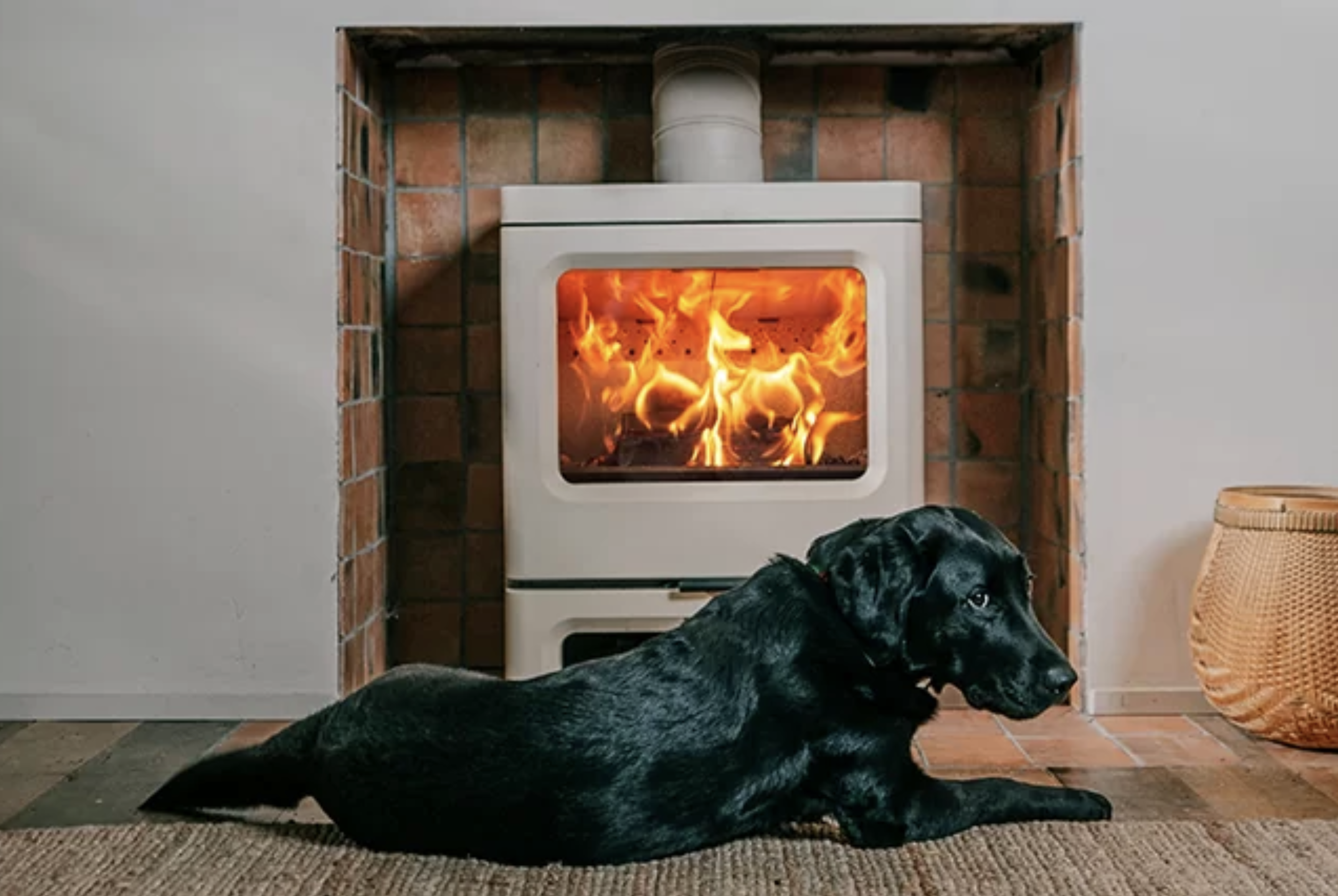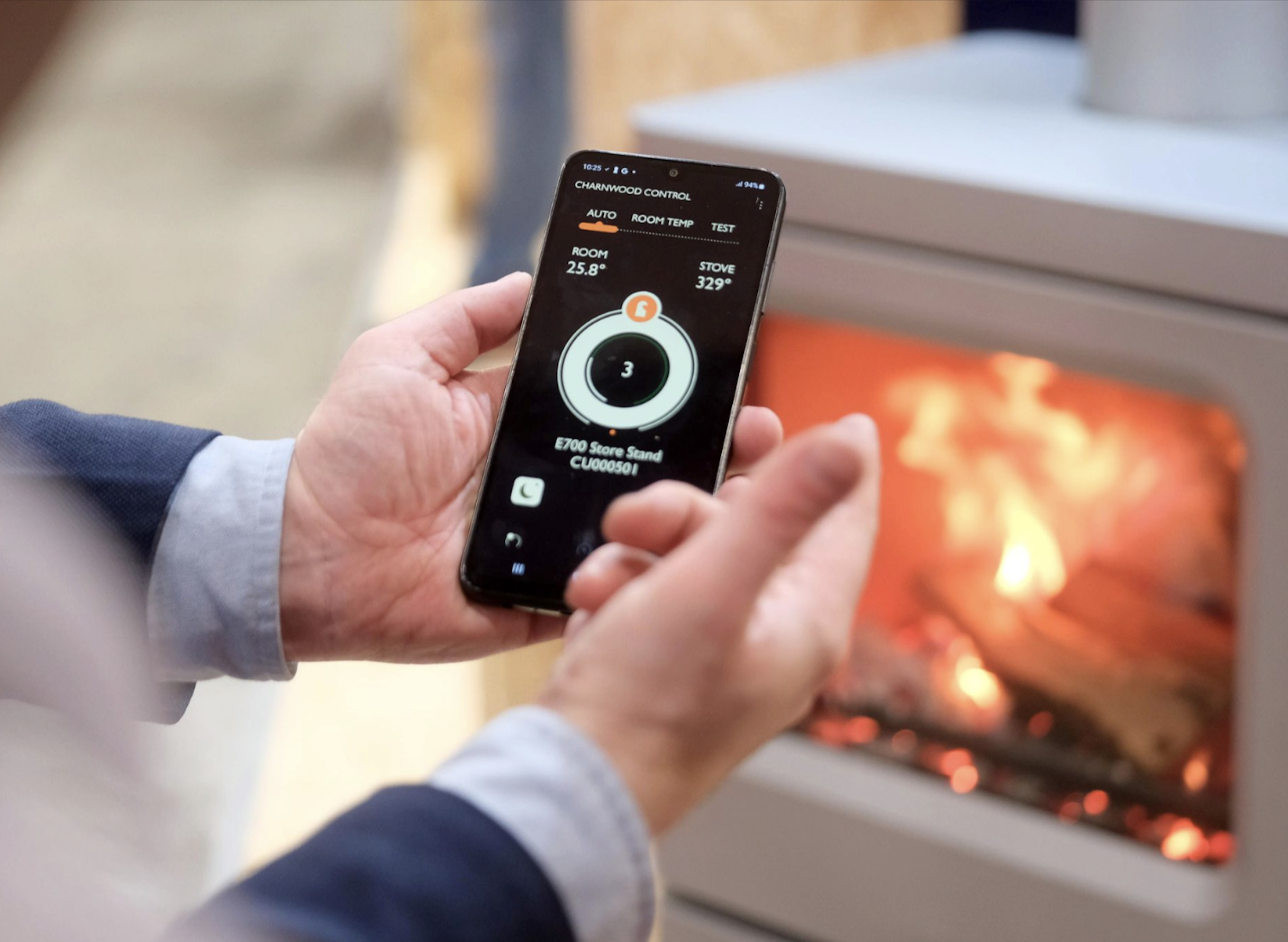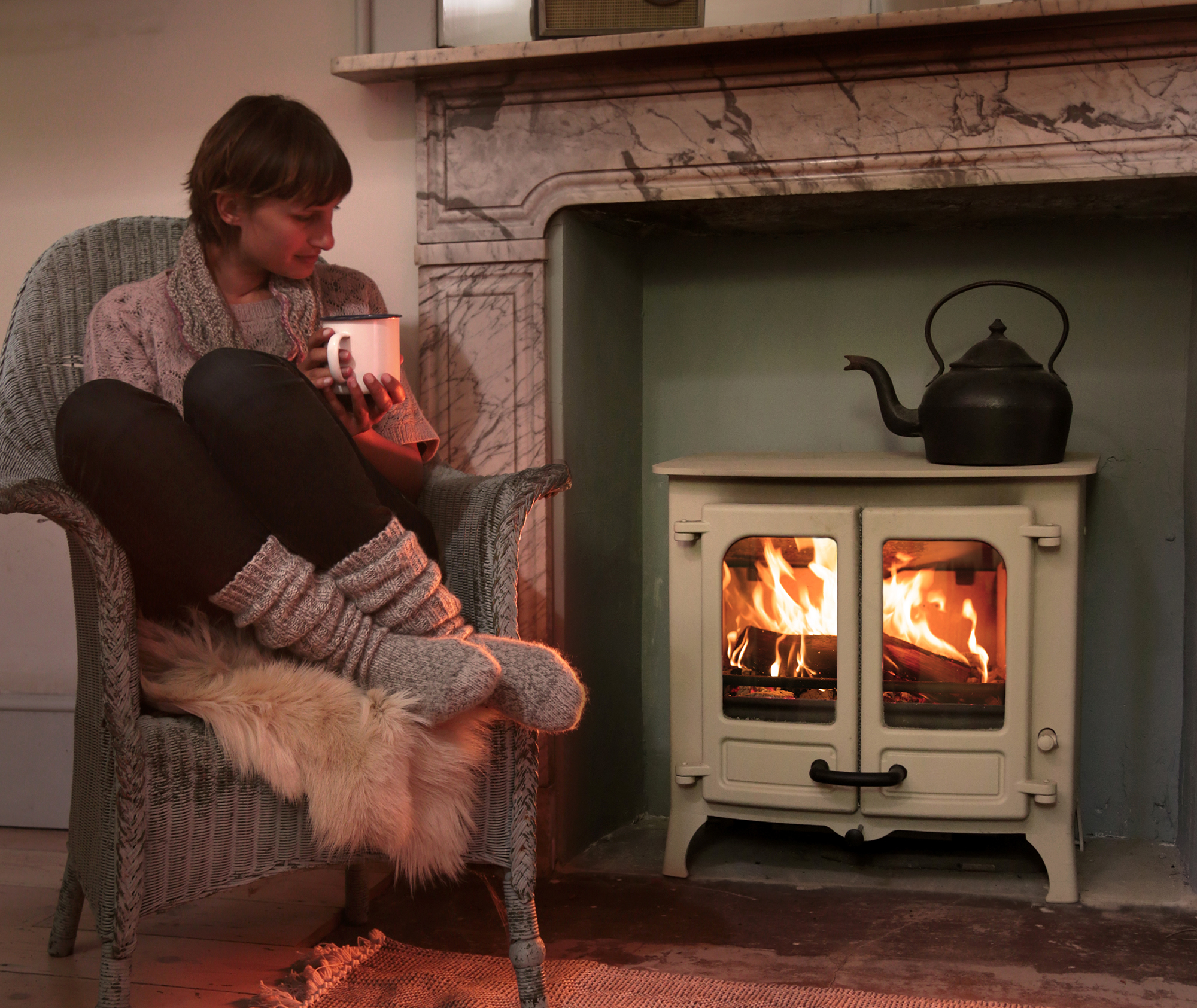Jason Scarlett is a modern stove expert and woodsman exploring the real-life potential of renewables that promote our humanity and local green environment.
_________
1/ Jason, can you tell us how your early career, (such as your time spent working in Borneo) has inspired your commitment to the use of sustainable renewable energy sources and which of these sources has the most likely benefit to future generations?

As with most people, my understanding of renewables, efficiency and sustainability has grown throughout my lifetime during an era of great change for humanity. I was born in rural Norfolk in a house with one open fire and can remember the blackouts during the workers’ strikes in the 1970s. We had prepaid meters for electricity and had to make sure we always had a 50p piece at the ready. Moving to the urban sprawl of Southend on Sea aged 8, I can remember my first experience with a gas fire. Until the age of 15, all I had known was one appliance that heated one room in the house—then came the revelation of full central heating…and a shower!
Coming from a poorer background, efficiency and sustainability are important aspects of everyday life. My early years living in the countryside allowed me an understanding of nature that many towns folk miss out on, but my year working for the oil and gas industry in the Borneo rainforest, aged 19, was a real eye-opener to how we are destroying the planet. I saw firsthand how the extraction and processing of fossil fuels and the yearning of corporates to replace the forest with agriculture was devastating the environment and the local indigenous tribes that had lived in harmony with the forests for thousands of years. If people really understood where their fossil fuels come from and the devastation they create, then it wouldn’t be hard for them to link the current crisis to their convenient lifestyles.
Chatting to the ruling/ wealthier classes of Malaysians about deforestation, the usual answer was ‘you’ve chopped yours down, why shouldn’t we’ and that got me thinking about the countryside that I knew in the UK. Whereas my belief before going to Malaysia was that rich biodiversity was only found in rainforests like Borneo and wasn’t relevant to the UK, in fact, the comment ‘you’ve chopped yours down’ gave me the realisation that our countryside and biodiversity was just a shadow of its former self.

Returning from Malaysia, I built a fireplace and chimney business based on my unique skill set. Over the coming years, I worked on traditional fireplaces, chimneys and solid fuel heating systems which led me to researching traditional woodland management and modern renewables relative to heating our existing housing stock. The realisation that the remnants of our ancient forests once held rich biodiversity comparable to Borneo and could be replaced and enhanced through traditional native management techniques funded by my customers’ energy bills, revolutionised my ethics, working practices and the products I installed. Compared to all other renewable energy solutions, no others depend on replanting native trees and managing them like our ancestors who looked after their environment with sustainability and future generations in mind.
To leave our descendants’ native trees and environmental know-how seems to me far better than leaving them expensive upkeep costs of follies like carbon capture machines or the perpetual engine that is replacing old solar panels or turbines that are at the end of their life. Plant a tree to be coppiced and it could be there for 1000 years, lay down a solar panel and replace it in 25!
2/ The coppicing of woodlands looks to be a practice that was used globally pre industrialisation dating back to indigenous populations. Can you tell us why this practice was so important and why approximately only 14% of woodlands in Europe are now coppiced?

The management of local environments evolved in line with the advancement of human civilization and was key to our existence. There are many forms of traditional management, including coppicing, coppice with standards and pollarding, that will be relevant to the locality and what naturally grows there. Similar modern approaches such as continuous cover forestry, permaculture and agroforestry are all currently being implemented and link strongly to traditional techniques.
The use of firewood is the reason humans were able to survive in colder climates and so it was a very important commodity that happened to grow naturally. Understanding how to nurture the environment to give enough fuel and food to survive without having to roam was key for the development of early settlements. As communities grew, so did demand… nothing much has changed in that aspect, but when the only resource is from the local environment, the necessity for better efficiency, local know-how, improved agriculture and forestry techniques became ever more important. There are instances throughout human history that suggest the downfall of some civilisations was caused by their inability to balance sustainability with growth. During the Middle Ages the UK overused its resources and so developments in managing techniques during the 15th century followed by declarations from Henry VIII and writings from John Evelyn set the path for unique practices that could arguably be attributed to creating the modern world as we know it.
Then along comes the industrialisation of fossil fuels and cheap wood imports, and wood fuel from the local environment becomes worthless, even more so because of industrial farming and forestry. In a capitalist society, if something is worth keeping then it will be kept. The reason for sympathetic woodland management decline is because it can take more time, money, labour, effort and specialist local know how than modern industrialised fossil fuel extraction and forestry techniques. It also doesn’t follow with the corporate mindset and mainly promotes a local economy headed up by local specialists.
Whereas most of my knowledge about coppicing centres around Essex and the southeast, what I do understand is that some colder climates do have natural environments that have only a few species of tree that supports less biodiversity than a rich mixture of tree types. The industrialisation of forestry over the past 200 years has promoted the planting of monocultures across the globe that supports very little biodiversity. Planting one or two species solely to harvest by clear felling for a certain product using industrialised techniques has overwhelmed many green environments. We can see this practice across Europe.
Portugal planted vast amounts of eucalyptus for paper, which is not an indigenous species and is blamed for many of the forest fires they now experience. In the UK we planted many poplars for use as matches, while chestnut was used for fencing. In Scotland there is much debate about the foreign Sitka spruce and pine forest monocultures that were planted, the forestry commission has recently updated guidance for planting mixed species in the future.
In Los Angeles, there has been mass planting in urban areas of palm trees because they look nice while the surrounding forests have not been managed properly in the way that the indigenous people did for millennia. Again, this meddling in the local environment is misguided and has been a contributing factor to the recent tragic devastation.
Monoculture for the sake of a single product and big corporate profits can be seen across the world and can be blamed for the loss of many habitats. In Borneo, the virgin rainforests I worked in have now largely been replaced with oil palm. The corporate takeover of our forests removes the connection of local sustainable management practices, such as coppicing that enhances biodiversity.
3/ Would sustained local/global coppicing have helped mitigate the circumstances of climate change and find us in different circumstances today?

Climate change is just one of the problems we now face and there seem to be many reasons apart from carbon why weather patterns are changing. What seems obvious to me is how forests play their part with weather and reduce how much heat is trapped in the ground. In Borneo, I would be woken up at 5 am to a biblical downpour outside but when I left for work at 6 am, the roads and urban areas were bone dry. The rainforest, however, held on to the moisture with noticeable increases in humidity and in the forests, it was slightly cooler. I often walk through local Essex woodlands midsummer and the temperature drops considerably under the tree canopy. Removing these natural environments surely plays a big part in the formation of clouds, wind and rain.
The method of harmonious management of the environment has taken many forms that are relevant to the local climate, landscape and ecosystem. The systems each civilisation followed were carefully developed over thousands of years and were born through the necessity to survive. The added bonus of well-managed woodlands using coppice techniques is that the whole process can be carbon neutral (and possibly carbon negative). By only taking what the forests want to give in order to be healthy, ensures that the root systems, that store carbon, are not affected while promoting rigorous regrowth that in turn speeds up the carbon sequestration time of the carbon neutral cycle.

My concept is that if people survived alongside their local nature, being part of the ecosystem, then they are the best source to understand how their local environment can survive and even be enhanced alongside modern lifestyles. Turning our back on our history and ancestral wisdom is easy if it is blindly fueled by a corporate takeover that sees no easy profit in our old ways. Surely, it’s better and morally right to work with the locals to enhance their local economy that relies on the sustainable natural products around them rather than chop it all down in favour of monocultures that decimate communities and landscapes just to feed corporate greed.
4/ You place a great onus on the health benefits of switching off and staring at a fire. Is there a poignant story you might share with us, of how this has impacted a customer’s life you have worked with?

What if our fixation on TV, computers, and phones is just a modern version of fire-watching? It’s the same endorphin release, which taps into our primal love for the flicker of flames. At what point in human history did we evolve to have sufficient concentration and the ability to contemplate, recalculate our methods and use language to communicate, plotting the activities for the next day? What else other than controlling fire gave us a feeling of warmth and security while allowing a time for the community to come together in social gatherings. The day is done, daily chores completed, night falls and the only reason we didn’t go straight to sleep like other animals is because we lit a fire. What superstitions, religions and beliefs evolved from around a fire while watching the random flame picture of this magical element.
Over the past 50 years, there have been many attempts to recreate the real flame of a wood fire. Gas and electric fires with the best technology still cannot come close to the mesmerising effect of the random flame picture created from the gases released from wood.
Modern society has changed exponentially over the past few generations, some of it in a positive way, while it can be argued that family cohesion has fallen by the wayside. Modern whole house central heating methods give a luxurious touch button warmth in every corner of every room that allows children to disappear to their own seclusion, usually armed with their own screens to fulfill their desire to ‘fire watch’. In the past, when there were no distractions from the TV and only one space was heated, the whole family sat around the fire, staring into the abyss while ‘talking’ amongst themselves. Many of my customers say that when the stove is on, their children are more likely to sit with them, reestablishing traditional family cohesion.
One day last autumn was quite poignant, I was out servicing wood stoves that I had previously fitted and had two elderly customers booked in one after the other. The first lady, who lives in a standard Victorian house, was concerned about the current anti stove campaign. With tears in her eyes, she asked ‘are they going to take my fire away?’ She explained how the fire was her crutch during winter, not just for the warmth, but with her little dog laid out in front, it eased her loneliness and gave a feeling of security that is hard to explain.
The second lady lives in an affluent mansion by herself, surrounded by expensive furnishings and trinkets, she has the best of everything. Again, with tears in her eyes she said ‘this stove is my best friend, I couldn’t live without it’
One of the reasons I love my job is because of the feedback I get from customers. Even those ‘middle-class’ customers who initially turned up at my shop in their new BMW and just wanted a stove ‘because their friends got one’, come back a year later to proclaim ‘what have you done to me, that stove is the best thing I’ve ever bought, I can’t leave it alone, I even love chopping and stacking the wood!’
It makes you wonder what’s missing in the modern world, we call it all progress, but is it really?
You can check out more of Jason Scarlett’s fantastic work via his website.




























